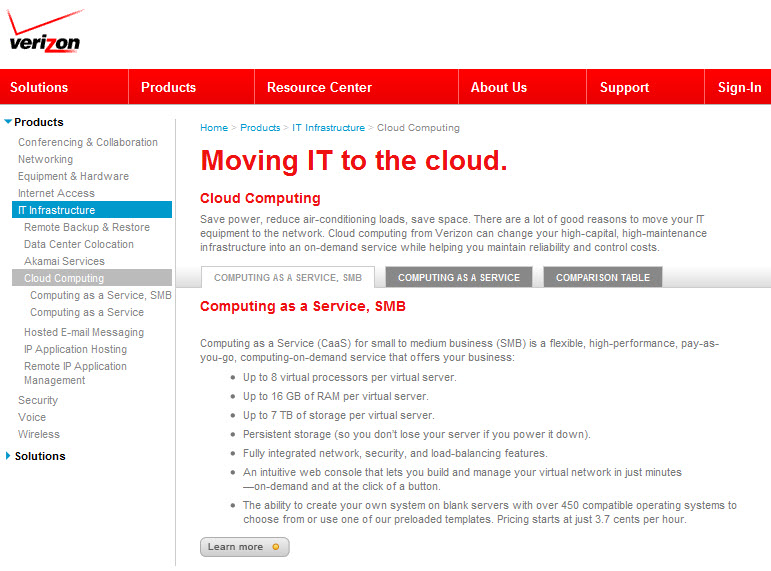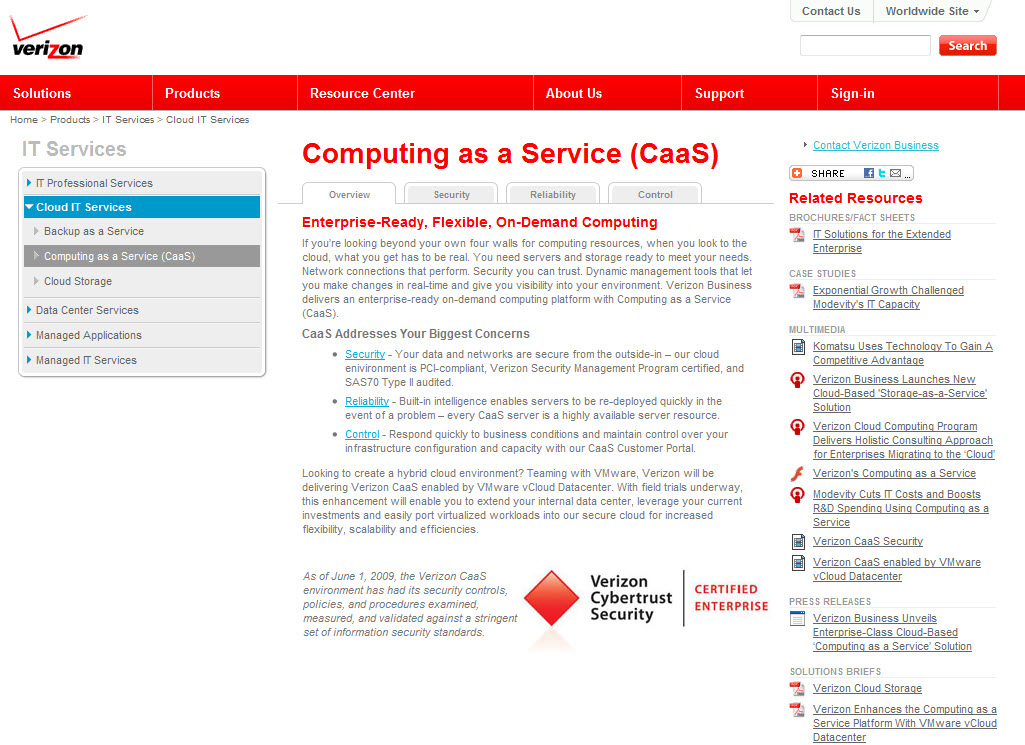Sponsored by Verizon
Sponsored Article: Getting Started with Verizon Cloud Services
Verizon has myriad small, medium and enterprise business-related cloud services, everything from the mundane process of making backups to more sophisticated collections of virtual and even physical servers. In this introduction, we'll show you what the landscape offers and provide some guidance on where to get started using some of these services. We'll post subsequent articles that will go into some details about the services, as well as cover some of the major issues with using cloud computing.
There are three main Verizon Web destinations:
1. The Small Business Center, which has links to applications such as Online Backup and Sharing, Encrypted Email, Internet Security Suite (co-branded with McAfee), and Web site hosting (co-branded with Intuit). There are discounts for multiple service purchases and monthly service charges that start at just a few dollars per account per month. These are great tools that can complement or replace a variety of desktop applications such as backup, anti-virus, email, and encryption. Many of these services are available for a free 30-day trial, so you can get an idea of what is involved before sinking any money into them.
2. The Computing as a Service (CaaS) for Small and Medium Businesses, which has links to Verizon's hosted cloud computing services that are provided by Terremark and leverage various VMware cloud computing products. With these services, you pay for just the computing resources that you need, and can set up virtual Windows and Linux servers to handle everything from simple to complex applications.
CaaS SMB services are similar to a wide variety of industry offerings from Amazon Web Servers, GoGrid, Skytap and other cloud computing providers. You use your Web browser to set everything up, including which servers are running, what ports they communicate on, and other configuration information.
The CaaS pages also have a series of video tutorials that give you an idea of the management screens and some of the processes involved in setting up servers and networks. We'll be doing our own tour of these in the coming month.
For either of these sites, you don't have to be a current Verizon landline, wireless or DSL customer to get started. Accounts take just a few minutes to setup. The CaaS SMB options are pay-as-you-go per computing resources (charged per server, processor, memory, and disk): for example, a 8 GB Windows server with a single virtual CPU and 100 GB of disk storage would cost less than a dollar per hour. Charges accrue whether your server is running or not. The full CaaS enterprise version requires a year contract and starts at $250/month.
3. Finally, there is a separate full enterprise version of CaaS services that can supply physical as well as virtual servers, along with higher densities of storage and RAM for each server.
Get Tom's Hardware's best news and in-depth reviews, straight to your inbox.
David Strom is the former editor-in-chief at Tom's Hardware and the founding editor-in-chief of Network Computing magazine. He has written thousands of articles for dozens of technical publications and websites, and written two books on computer networking.
-
dEAne I have checked the site maybe I will give it a try. It is too early to say - it is really good idea.Reply


